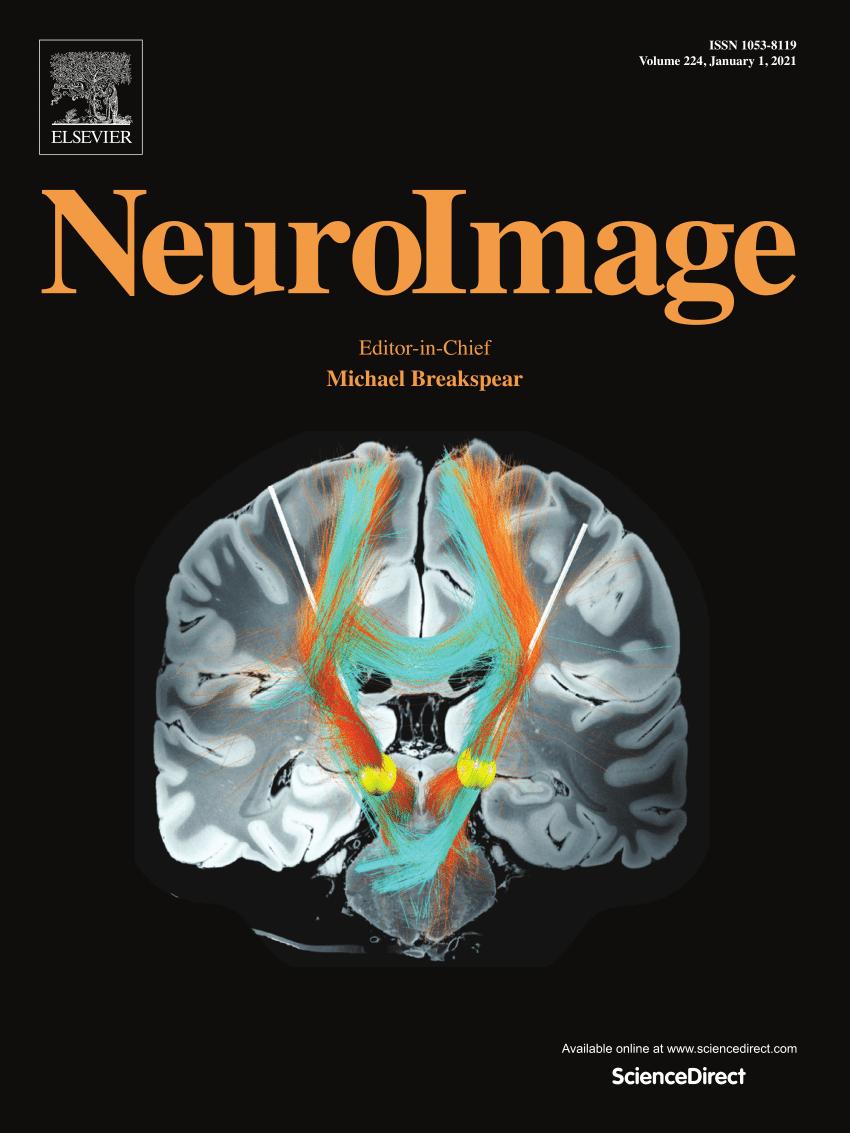Changes in white matter predict efficacy of repetitive transcranial magnetic stimulation in Parkinson's disease
IF 4.5
2区 医学
Q1 NEUROIMAGING
引用次数: 0
Abstract
Background
The efficacy of continuous theta burst stimulation (cTBS) in Parkinson's disease (PD) exhibits considerable variability. Emerging evidence links changes in brain white matter (WM) activity to the onset and progression of PD, offering novel insights into its pathophysiology.
Objective
Exploring activity patterns within different WM regions to predict the therapeutic efficacy of cTBS.
Methods
This retrospective study included 68 patients with PD who underwent a 14-day cTBS targeting the supplementary motor area (25,200 pulses). Patients were classified as responders (R, n = 20) or non-responders (NR, n = 48) based on whether their UPDRS III score improved by ≥30 %. Pre-intervention differences in WM amplitude of low-frequency fluctuations (ALFF) and fractional ALFF in fMRI were analyzed, along with their correlation with motor symptom improvement. A support vector machine (SVM) model was developed to predict cTBS efficacy and validated in an independent cohort (n = 22).
Results
Compared to the NR group, R patients exhibited greater improvements in rigidity and axial symptoms, accompanied by lower baseline ALFF in multiple WM tracts. SVM analysis identified higher baseline UPDRS III and rigidity scores, along with reduced ALFF in the left corticospinal tract, right ILF, and left anterior thalamic radiation, as predictors of better motor outcomes. In an independent cohort, predicted and actual UPDRS III improvements showed a concordance correlation coefficient (CCC) of 0.630. A combined model incorporating rigidity scores and ILF_R ALFF achieved moderate accuracy in predicting rigidity improvement (CCC = 0.725).
Conclusion
Baseline WM function may serve as a biomarker for predicting motor response to cTBS.
白质变化预测重复经颅磁刺激治疗帕金森病的疗效
背景:连续θ波爆发刺激(cTBS)治疗帕金森病(PD)的疗效表现出相当大的可变性。新出现的证据表明,脑白质(WM)活动的变化与PD的发生和进展有关,为其病理生理学提供了新的见解。目的探讨不同WM区域的活动模式,预测cTBS的治疗效果。方法本回顾性研究包括68例PD患者,他们接受了为期14天的针对辅助运动区(25,200次脉冲)的cTBS。根据UPDRS III评分是否改善≥30%,将患者分为反应者(R, n = 20)或无反应者(NR, n = 48)。分析干预前fMRI低频波动WM幅值(ALFF)和分数ALFF的差异及其与运动症状改善的相关性。采用支持向量机(SVM)模型预测cTBS疗效,并在独立队列(n = 22)中进行验证。结果与NR组相比,R组患者在僵硬和轴向症状方面表现出更大的改善,同时多个WM束的基线ALFF较低。支持向量机分析发现,较高的基线UPDRS III和刚性评分,以及左侧皮质脊髓束ALFF、右侧ILF和左侧丘脑前辐射的降低,是更好的运动预后的预测因素。在独立队列中,预测和实际UPDRS III改善的一致性相关系数(CCC)为0.630。结合刚度评分和ILF_R ALFF的组合模型在预测刚度改善方面具有中等精度(CCC = 0.725)。结论基线WM功能可作为预测cTBS运动反应的生物标志物。
本文章由计算机程序翻译,如有差异,请以英文原文为准。
求助全文
约1分钟内获得全文
求助全文
来源期刊

NeuroImage
医学-核医学
CiteScore
11.30
自引率
10.50%
发文量
809
审稿时长
63 days
期刊介绍:
NeuroImage, a Journal of Brain Function provides a vehicle for communicating important advances in acquiring, analyzing, and modelling neuroimaging data and in applying these techniques to the study of structure-function and brain-behavior relationships. Though the emphasis is on the macroscopic level of human brain organization, meso-and microscopic neuroimaging across all species will be considered if informative for understanding the aforementioned relationships.
 求助内容:
求助内容: 应助结果提醒方式:
应助结果提醒方式:


